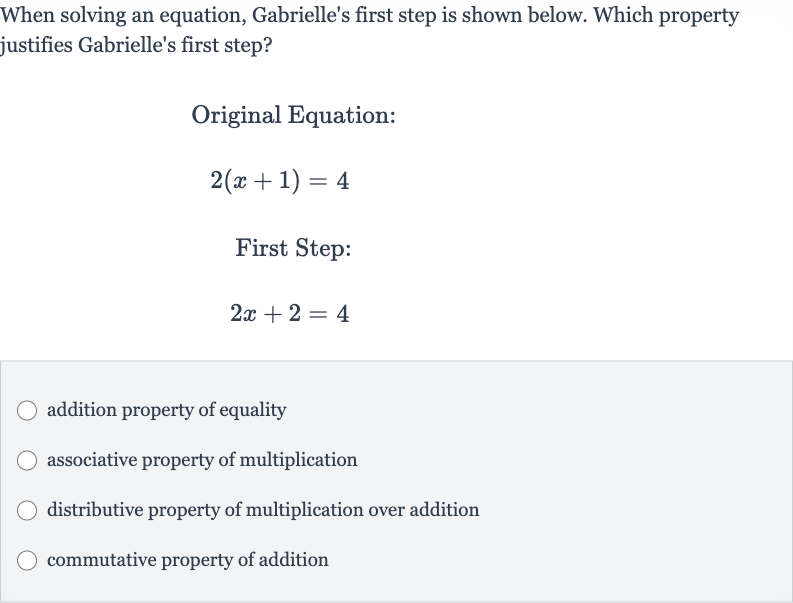AI tutor
Welcome to Bytelearn!
Let’s check out your problem:

When solving an equation, Gabrielle's first step is shown below. Which property justifies Gabrielle's first step?Original Equation:First Step:addition property of equalityassociative property of multiplicationdistributive property of multiplication over additioncommutative property of addition
Full solution
Q. When solving an equation, Gabrielle's first step is shown below. Which property justifies Gabrielle's first step?Original Equation:First Step:addition property of equalityassociative property of multiplicationdistributive property of multiplication over additioncommutative property of addition
- Transform Original Equation: Gabrielle's first step is to go from the original equation to the equation . To determine which property justifies this step, we need to look at the transformation that has been applied to the original equation. Gabrielle has taken the term and turned it into . This is done by applying a property of operations to the terms inside the parentheses.
- Apply Distributive Property: The distributive property of multiplication over addition states that . In the context of the equation, can be distributed to become , which simplifies to . This is exactly what Gabrielle did in her first step.
- Verify Math Accuracy: To check for any math errors, we can apply the distributive property ourselves to the original equation: . This matches Gabrielle's first step, confirming that there are no math errors in this step.
More problems from Identify properties of logarithms
QuestionGet tutor help
QuestionGet tutor help
QuestionGet tutor help
QuestionGet tutor help
QuestionGet tutor help
